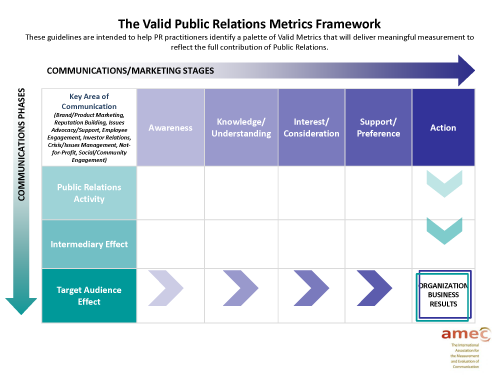Join David Rockland for his online training session, “Demonstrating the Value of the Work You Do — Part 3,” on March 20, 2012 3–4 p.m. EST. This public relations measurement training sesssion is free to PRSA members. ![]()
Jessica was back. This time she brought her boss Alana, a vice president.
“We have a problem,” Jessica began. “We’ve convinced more clients to stop using AVEs, but they keep asking what to replace them with.”
“And now we are planning for one of our largest global accounts,” added Alana. “The client wants goals with specific key performance indicators and a measurement plan. But the work we do for them covers everything from employee engagement to public affairs to CSR to brand marketing. How do we decide what the right success factors or KPIs are?”
It is something the profession has struggled with. AVEs were popular because they were simple and cheap. But they are also incredibly inaccurate, as we talked about last month. To help determine what to measure — often half the battle in measurement — the International Association for Measurement and Evaluation of Communication (AMEC) partnered with PRSA and developed the Valid Metrics Framework.
This framework is a series of matrices that are easy to use and show what to measure for all different types of PR programs — CSR, public affairs, employee engagement, brand marketing, etc.
You select the right chart by the type of program you are doing, determine what you are trying to change about the target audience and then select the relevant metrics in that box in the matrix.
This idea is based on the marketing funnel. If I want you to buy something, then I have to make you aware that the product exists and then, tell you what it does. If you feel good about the product, then you might buy it. It also gives metrics for program execution, results in the media (social and traditional), and the effects on the target audience, including business results.
The Valid Metrics Framework adds tremendous robustness to how practitioners evaluate public relations, and gets us away from dumb metrics like clip counts alone, or worse, the dreaded AVEs. And, it turns public relations from media flacks to valuable business associates.
Do you have any questions? Email Doc Rock.
This article originally appeared in the March 2012 issue of Public Relations Tactics.
David B. Rockland, Ph.D. is partner/CEO and managing director for the research and change communications businesses at Ketchum. He has held leadership positions in corporate communications and research throughout his career, with extensive global experience in both fields







